たたない塔|Erectile Dysfunction
システム・エンジニアリング:稲福 孝信(HAUS Inc.)
作品は「伸縮する塔」、「反転した塔」、「浮遊する塔」の3つの大きな「たたない塔」による運動によって構成される。和人による北海道開拓は、アメリカ合衆国成立の経緯に擬えて語られることがあり、実際に当時、合衆国建国後に南北戦争を経験した米人が招聘され、彼らはより合理的な同化政策のノウハウを和人に指南したと考えられる。アメリカではインディアンと呼ばれる先住民、北海道ではアイヌ民族。どちらも開拓という建前の元、懐柔され、結果的に在り処を追いやられている。建造に至ったプロセスや理由はどうあれ、蹂躙した側は、天高く伸びる巨大な塔を記念碑として、それぞれの正義の名の下に建立している。本作ではテクノロジーを著しく冗長的に使用せしめることで、合理主義的価値観を瓦解させることを試みている。テクノロジーに宿る進歩主義観は、時に人間性を奪い他者を抑圧する。この作品は、それを防ぐための実践である。
System Engineering: Takanobu Inafuku
The work consists of a movement of three large "towers that don't stand": a "tower that telescopic", a "tower that reverses", and a "tower that floats. The frontier of Hokkaido by the Japanese is sometimes likened to the establishment of the United States of America, and it is believed that Americans who had experienced the Civil War after the founding of the United States were invited to Japan to teach the Japanese the know-how of a more rational assimilation policy. In the U.S., it was the indigenous people called Indians, and in Hokkaido, it was the Ainu people. Both of these peoples have been driven out of their places under the pretext of cultivation. Regardless of the process and reasons behind the construction, the overrun side erects a huge tower stretching high into the sky as a monument in the name of justice. This work attempts to dismantle rationalistic values through the grossly redundant use of technology. The progressivism that inhabits technology sometimes dehumanizes and oppresses others. This work is a practice to prevent this from happening.
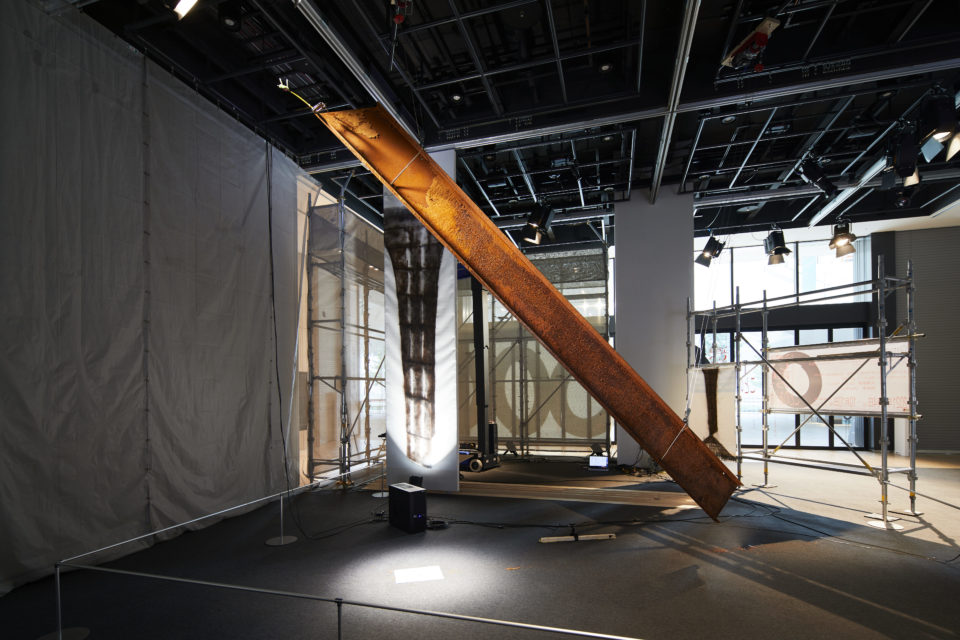
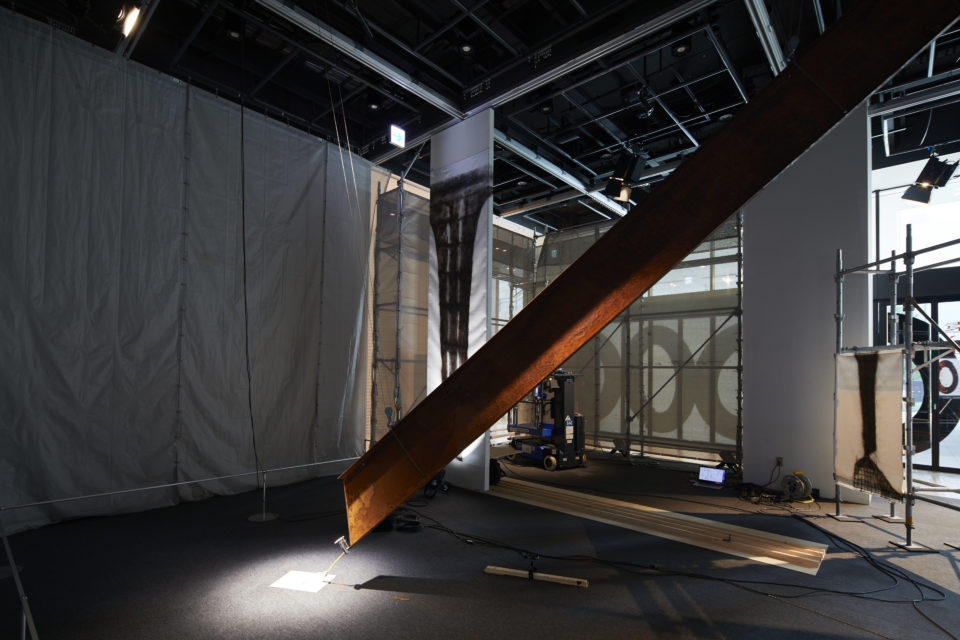

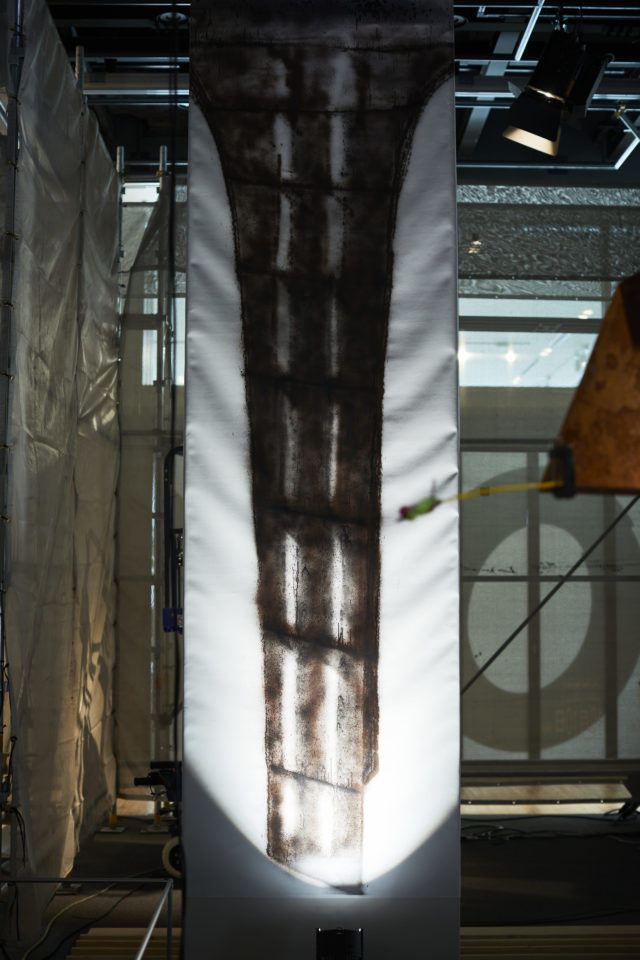
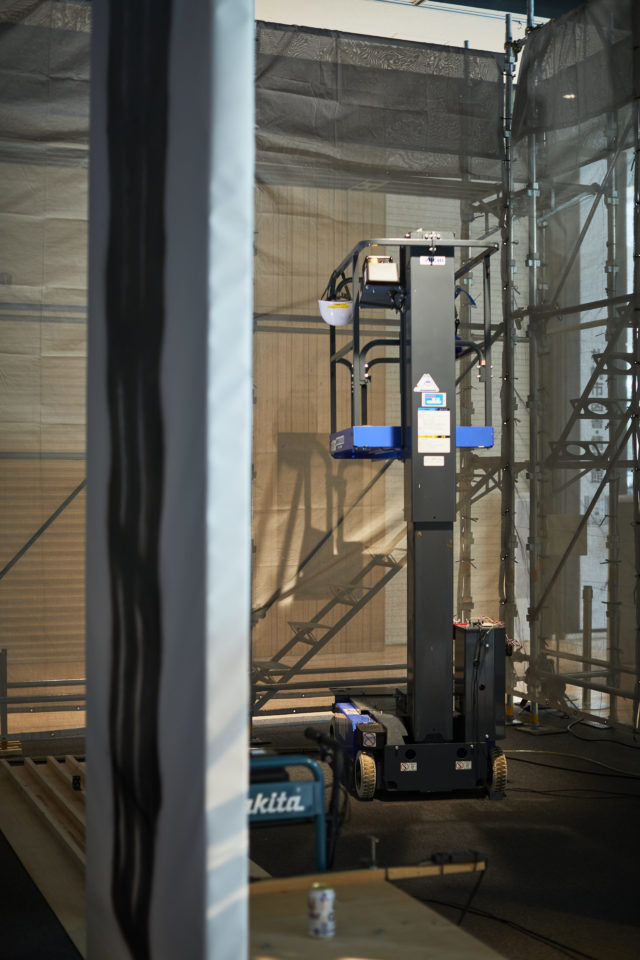
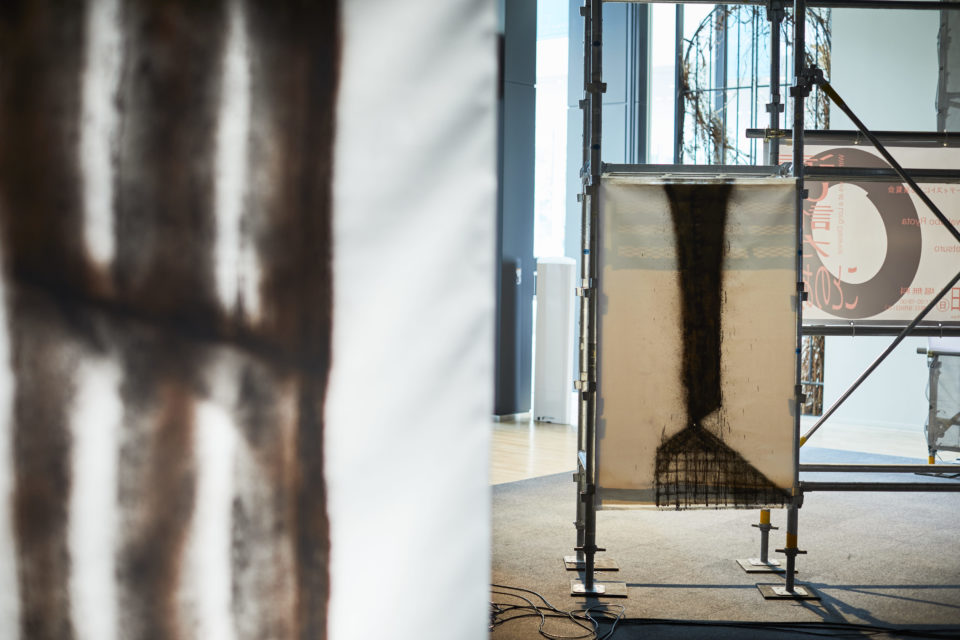
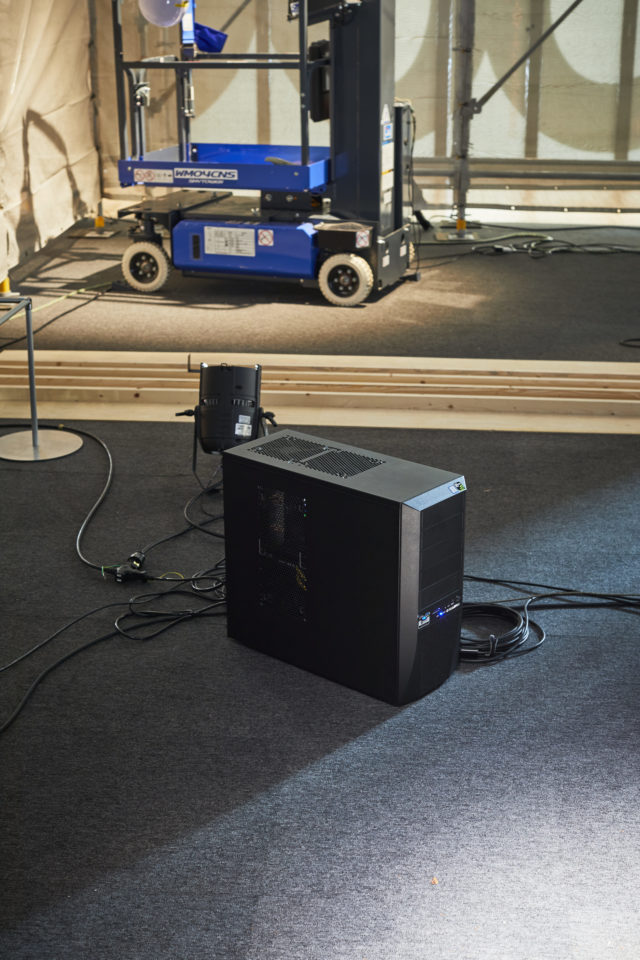
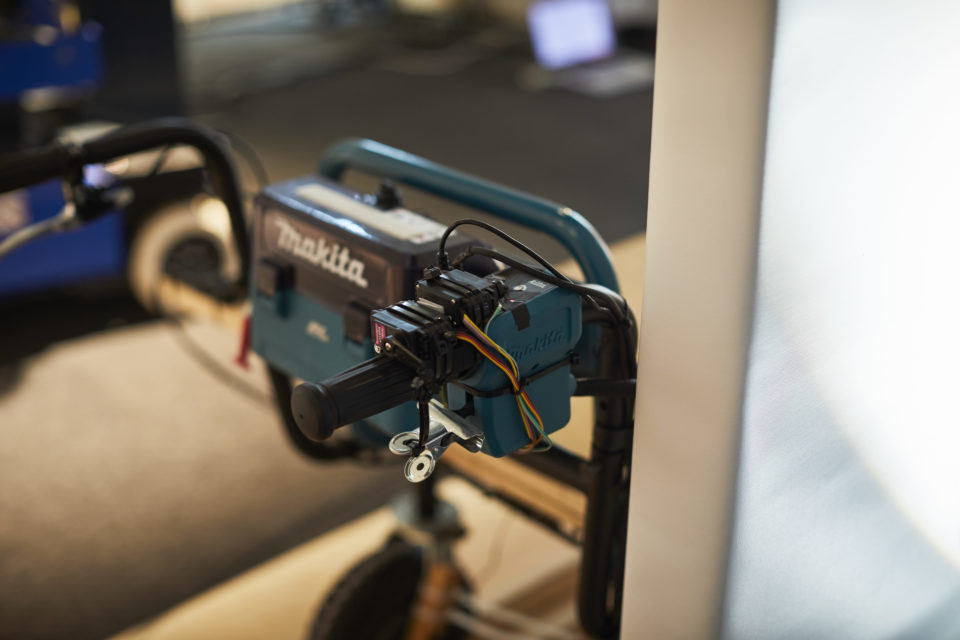
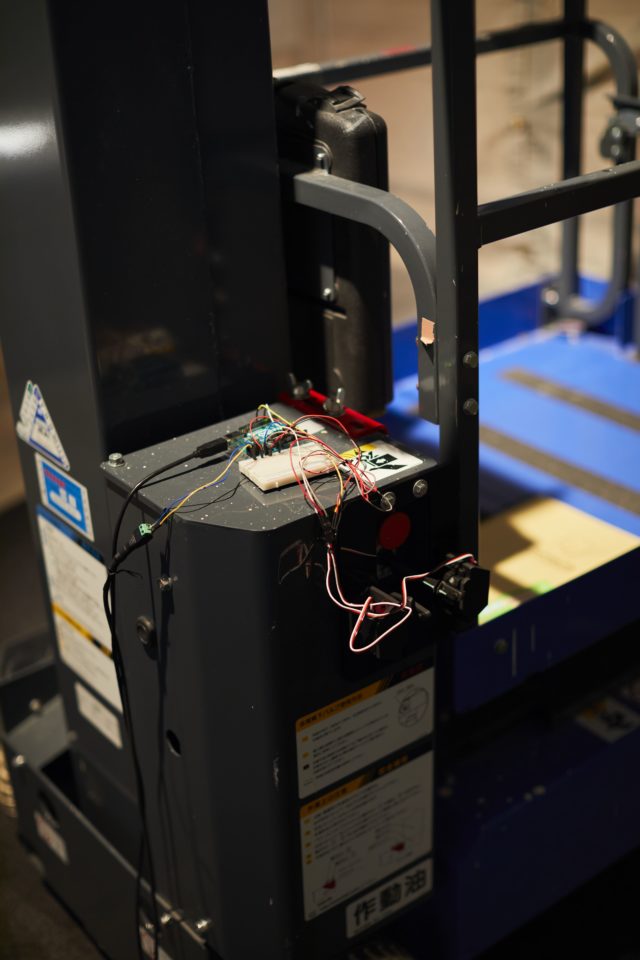
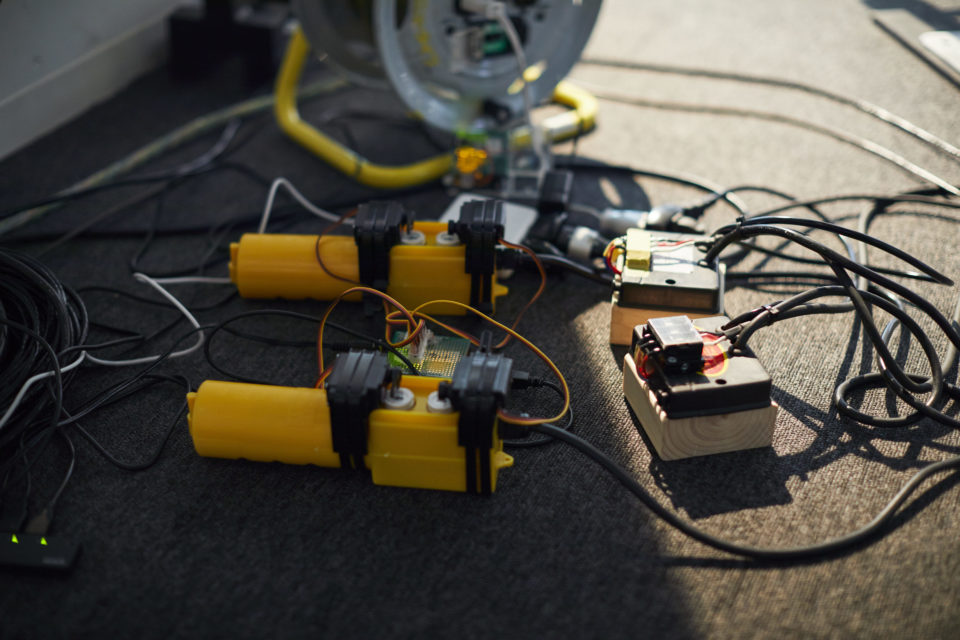
撮影:リョウイチ・カワジリ
写真提供:札幌文化芸術交流センター SCARTSPhoto: RYOICHI KAWAJIRI
Photo courtesy: Sapporo Cultural Arts Community Center SCARTS
Related Exhibitions
- 2021|遠い誰か、ことのありか @札幌文化芸術交流センター SCARTS(北海道)
- 2021 | With Others at a Long Distance @SCARTS(Hokkaido, Japan)